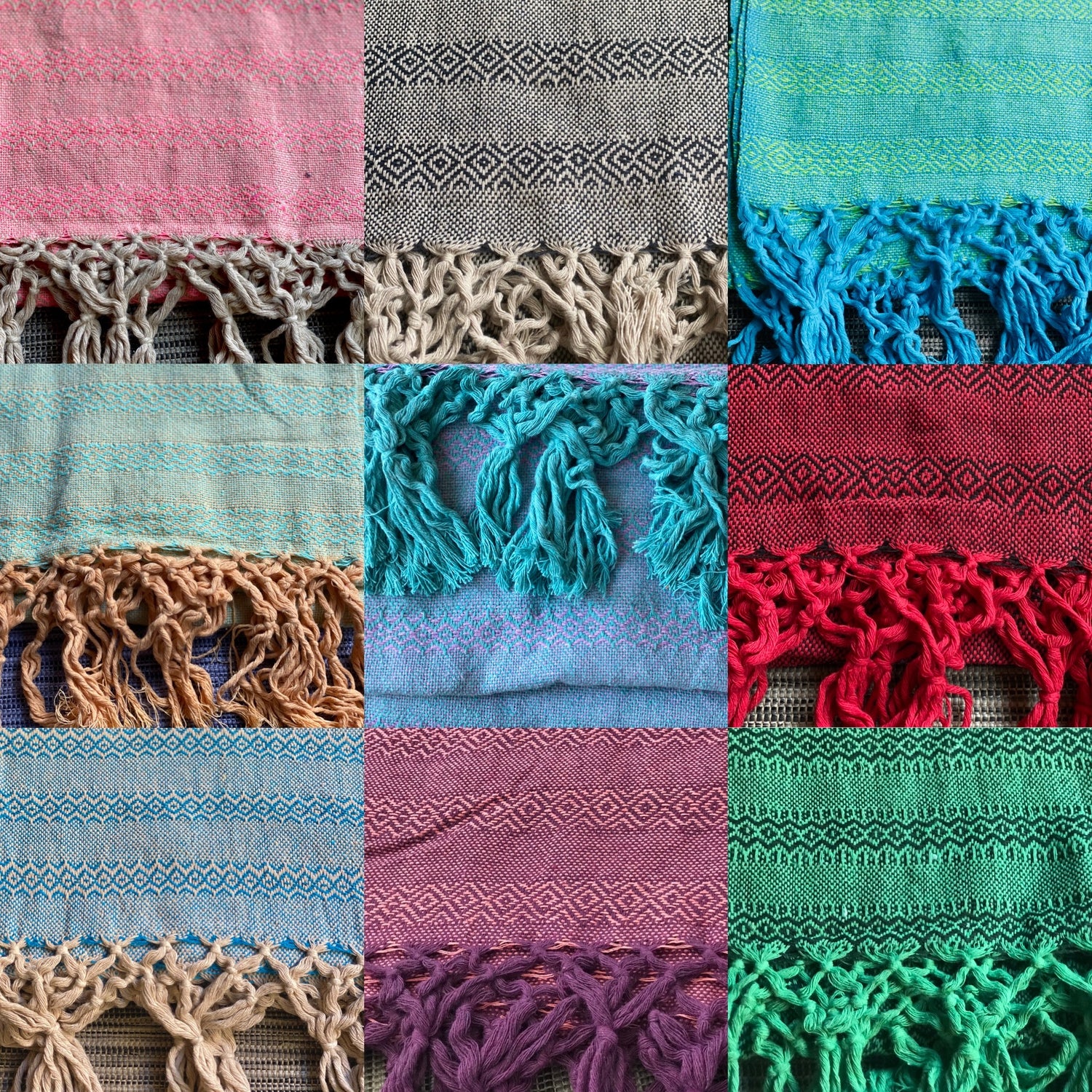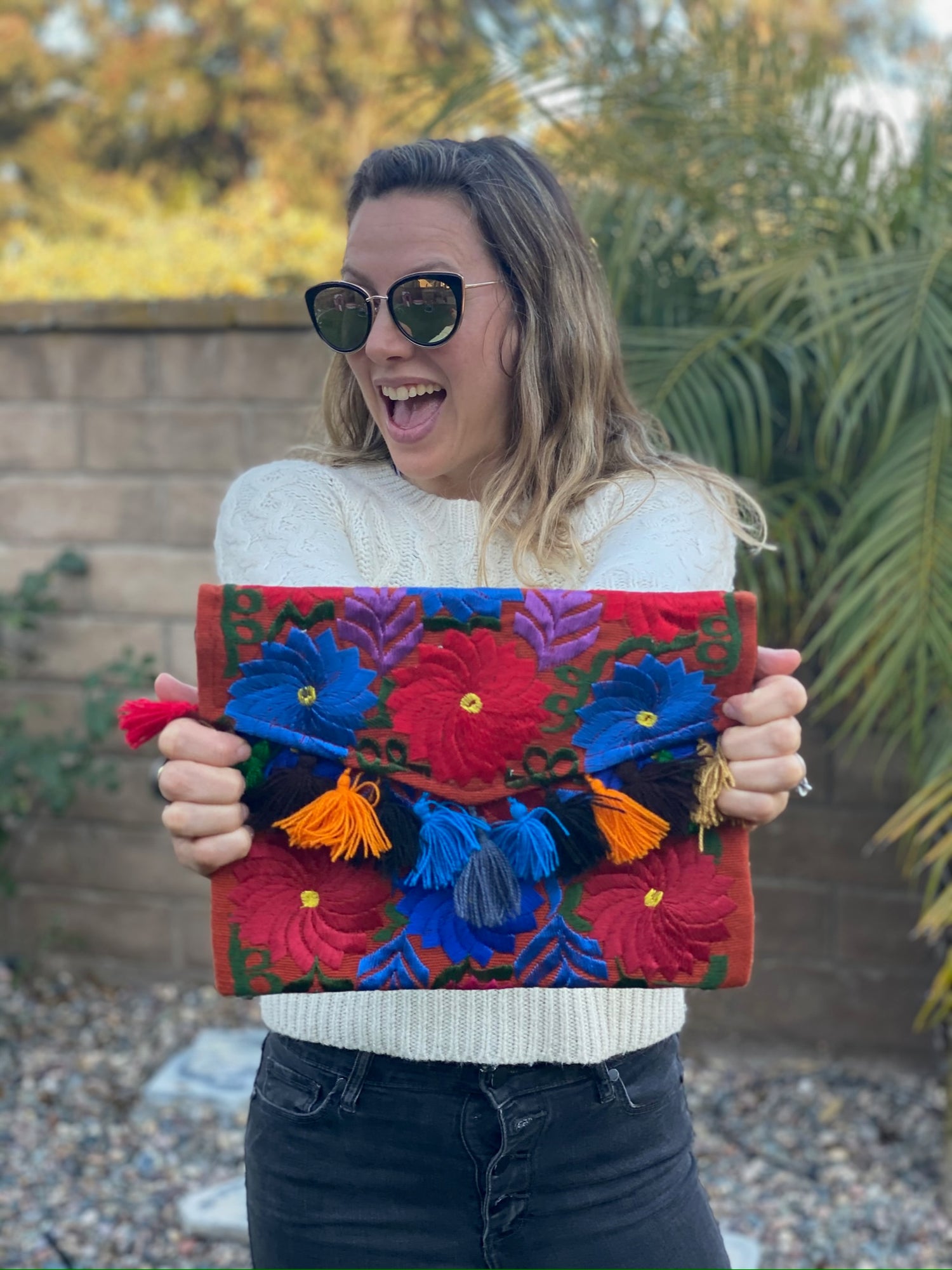Regional variations in rebozo styles reveal the rich tapestry of Mexican culture that has evolved over centuries.
From the bold geometric patterns of Oaxaca to the vibrant floral designs of Guerrero, each region offers its distinct take on this traditional garment.
By exploring these unique styles, you can gain a deeper appreciation for how the rebozo reflects the identity and history of the communities that create them.

Each area's rebozo is not just an accessory; it tells a story about the people and their customs. The rebozo has served various purposes throughout history, from daily wear to significant cultural ceremonies, showcasing the versatility and importance of this textile.
Understanding these regional styles connects you to the broader narrative of Mexican heritage and artistic expression.
In this post, you will discover how the rebozo has transformed over time while remaining an essential piece of Mexican fashion. You'll learn about its historical significance and how it continues to be celebrated in contemporary culture.
Key Takeaways
- Regional styles of rebozos reflect the diverse cultures of Mexico.
- The rebozo has a rich history linked to identity and tradition.
- Each unique design tells a story about its community and heritage.
Historical Significance and Evolution of the Rebozo

The rebozo is rich in history and meaning, reflecting Mexico’s diverse culture. Its evolution showcases the influence of colonialism, modernization, and Mexican identity. This section explores its traditional roots, contemporary relevance, and representation in museums.
Traditional Origins and Colonial Influences
The rebozo's origins date back to the pre-Hispanic era. Indigenous women originally wove these shawls from cotton and wool, using techniques passed down through generations.
During the Colonial Period, the Spanish introduced new weaving methods and materials. This blend led to distinct styles, including the intricate jaspe technique.
Today, the rebozo symbolizes Mexican heritage, connecting past and present. Artisans continue to craft these textiles, ensuring traditional practices thrive. Notable figures, like Frida Kahlo, often portrayed the rebozo in their art, further cementing its cultural significance.
The Rebozo in Modern Mexican Society
In modern times, the rebozo serves multiple purposes. Beyond its use as clothing, it represents Mexican identity and cultural pride.
You can see rebozos in everyday life, from festivals to family gatherings. They also play a role in important ceremonies, such as weddings and Mexican Independence Day celebrations.
Fashion designers, including Zandra Rhodes, have incorporated rebozos into contemporary styles. This blend of tradition and modern fashion keeps the rebozo relevant today.
Museums and Exhibitions Featuring Rebozos
Several museums showcase the beauty and history of the rebozo. The Fashion and Textile Museum often hosts exhibitions highlighting its art and craftsmanship.
Ricardo Legorreta, renowned for his architecture, has also participated in preserving this art form. Notable exhibitions often feature Lourdes Almeida, who shares the rebozo's significance through her work.
These museums not only celebrate the textile but also educate visitors about its historical context and ongoing relevance in modern culture. You can find rebozos displayed alongside other iconic Mexican artworks, illustrating their important role in the nation's identity.
Cultural and Material Diversity of Rebozos

Rebozos showcase a remarkable range of styles and techniques across Mexico. Each region contributes unique textiles, materials, and cultural significance to these traditional shawls. Understanding these differences enhances appreciation for this handcrafted art form.
Variations Across Regions
In Mexico, rebozos vary significantly by region. For example, rebozos from Oaxaca often feature vibrant colors and intricate embroidery. In contrast, those from San Luis Potosí may use more muted tones with simpler patterns.
Each location has its specific styles, such as the famous rebozo de Santa María del Río, known for its fine silk fabric. The rebozos of Chiapas often incorporate colorful designs influenced by indigenous cultures.
These regional variations make each piece unique, reflecting the history and tradition of its community.
Weaving Techniques and Materials
Artisans use different materials and techniques to create rebozos. Cotton is common for everyday wear, while silk is often used for special occasions. In some regions, rebozos are woven from wool for added warmth.
Weaving techniques vary, too. Many artisans use traditional backstrap looms, which allows for intricate designs. The ikat technique is prevalent in several regions, where patterns are dyed before weaving, resulting in striking visuals.
Artisans may also use natural dyes from plants to create beautiful, vibrant colors, while synthetic dyes offer more color options.
Symbolism and Usage in Ceremonies
Rebozos hold deep cultural significance and are often used in significant life events. In weddings, a rebozo can symbolize the union of two families and is often part of traditional attire.
During childbirth, the shawl serves as a protective covering for the mother and child, representing care and warmth.
Many rebozos feature symbols that have cultural meanings, such as floral designs that signify fertility, or geometric patterns that relate to community identity.
These textiles go beyond mere clothing; they represent a rich cultural heritage that binds communities together, celebrating traditions through each unique piece.
Frequently Asked Questions

This section addresses common questions about the various styles, materials, and cultural significance of the Rebozo in Mexico. You will learn about its evolution and practical uses in contemporary society.
What are the different styles of Rebozos found in various regions of Mexico?
In Mexico, you can find different Rebozo styles depending on the region. For example, the Rebozo from Oaxaca often features bright colors and intricate patterns, while those from Michoacán may highlight traditional designs. Each region reflects its unique cultural influences in the patterns and colors used.
How do the materials and weaving techniques vary for Rebozos across Mexico?
Materials for Rebozos also vary by region. Some are made from cotton or silk, providing different textures and uses. Weaving techniques differ as well; for instance, some areas use hand-woven methods, while others utilize modern textile machinery, influencing the final product's quality and feel.
Can you explain the cultural significance of the Rebozo in Mexican society?
The Rebozo holds deep cultural significance in Mexico. It symbolizes femininity and is often associated with Mexican identity. Worn by women throughout history, it has become a representation of resilience, tradition, and community, connecting generations through its use and craft.
What role does the Rebozo play in traditional Mexican ceremonies and festivities?
In traditional ceremonies, the Rebozo plays an important role. It is often worn during weddings, religious festivals, and cultural events. It can serve as a symbol of devotion and honor, adding to the richness and symbolism of these occasions.
How has the use of the Rebozo evolved over time in Mexico?
Historically, the Rebozo was a practical item for women, used for carrying babies and goods. Today, its use has expanded into fashion and design, blending traditional methods with modern creativity. This evolution reflects changing societal roles and contemporary aesthetics.
What are some common ways to wear or use a Rebozo in contemporary Mexico?
In contemporary Mexico, you can wear a Rebozo in many ways. Women often use it as a shawl for warmth, a headscarf for sun protection, or a fashion accessory to complement outfits. Its versatility highlights both cultural heritage and modern style.




